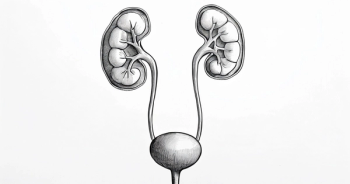
PARP Inhibitors Show Promising Response and Clinical Benefit in BRCA-Altered Uterine Leiomyosarcoma
Patients with BRCA-altered uterine leiomyosarcoma treated with PARP inhibitors demonstrated encouraging outcomes.
Patients with BRCA-altered uterine leiomyosarcoma (LMS) treated with PARP inhibitors demonstrated encouraging outcomes, including an overall response rate (ORR) of 46%, a clinical benefit rate (CBR) of 62%, and a median progression-free survival (PFS) of 13.2 months (range, 1.0–71.9 months), according to a small retrospective study published in JCO Precision Oncology.
The analysis included 534 patients with uterine sarcoma, 40 of whom harbored BRCA alterations. After excluding 9 ineligible patients and adding 5 misclassified or externally tested cases, the final cohort comprised 35 patients with pathogenic BRCA alterations.
Among the LMS group, 4 PARP inhibitors—olaparib (Lynparza), talazoparib (Talzenna), niraparib (Zejula), and rucaparib (Rubraca)—were administered, with olaparib being the most frequently used (50%). Eight patients (57%) received PARP inhibitors in combination with other therapies, including 5 patients treated in clinical trials pairing PARP inhibitors with immune checkpoint inhibitors avelumab (Bavencio) or nivolumab (Opdivo) and 2 patients enrolled in a trial combining a PARP inhibitor with a Wee1 inhibitor.
Thirteen patients were treated in the recurrent or metastatic setting, whereas 1 received PARP therapy as maintenance. In the recurrent/metastatic group, outcomes posttreatment included 1 complete response (CR; 8%), 5 partial responses (PR; 38%), 5 cases of stable disease (SD; 38%), and 2 instances of disease progression (PD; 15%).
For the 6 patients achieving CR or PR, the median time to first response was 1.7 months (range, 1.6–5.9), with a median duration of response of 37.0 months (range, 12.8–70.2). The overall median time to progression was 13.2 months (range, 1.3–71.9). Notably, patients taking PARP inhibitor monotherapy (n = 6) had a median PFS of 2.0 months, whereas those receiving PARP inhibitors combined with immune checkpoint inhibitors (n = 5) achieved a median PFS of 40.9 months.
The study cohort consisted of patients with histopathologically confirmed uterine sarcoma treated at Memorial Sloan Kettering Cancer Center, New York, New York, with BRCA alterations identified through the cancer center’s Integrated Mutation Profiling of Actionable Cancer Targets (IMPACT) next-generation sequencing. The median age at diagnosis was 54 years (range, 34–74), and the majority of patients were White (77%).
Pathogenic alterations were found in BRCA2 (n = 33) and BRCA1 (n = 2), with homozygous deletions being the most common in BRCA2 (70%), followed by mutations (27%) and structural variants (3%). LMS was the predominant histology (86%), followed by adenosarcoma (6%).
The median duration of PARP inhibitor therapy was 14.5 months (range, 1.3–71.9; n = 12), with disease progression being the most common reason for discontinuation (6 patients, 46%). Two patients (15%) discontinued due to severe adverse events—1 patient from persistent cytopenias caused by myelosuppression and another from autoimmune nephritis likely triggered by nivolumab. Three patients (23%) remained on PARP therapy at the time of analysis.
The findings also raise the question of whether BRCA alteration type plays a role in the response to PARP inhibitor therapy in uterine sarcoma. Eight of 10 patients with LMS with BRCA homozygous deletions treated with PARP inhibitors exhibited clinical benefit, compared with 0 of 3 patients with LMS without homozygous deletions.
Despite the promising results, lead author Alison M. Schram, MD, and colleagues urged caution due to the study’s small sample size and retrospective design. However, they noted that PARP inhibitor therapy appeared to outperform standard chemotherapies and hormonal therapies in nonfirst-line uterine sarcoma treatment. “Our findings in patients with somatic BRCA alterations support considering PARP inhibitors for BRCA-altered uterine sarcoma,” the investigators concluded.









































